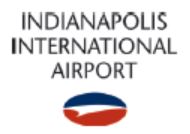There has been an unconventional participant at the table as San Diego International Airport (SAN) plans its Terminal 1 replacement project, scheduled for construction from 2022 to 2026. Artist James Carpenter, who is designing T1’s south façade, is serving on the design-build team alongside Turner Construction and Flatiron Construction, joint venture partners for the project that bring considerable industry experience in terminal/concourse and airside construction.
There has been an unconventional participant at the table as San Diego International Airport (SAN) plans its Terminal 1 replacement project, scheduled for construction from 2022 to 2026. Artist James Carpenter, who is designing T1’s south façade, is serving on the design-build team alongside Turner Construction and Flatiron Construction, joint venture partners for the project that bring considerable industry experience in terminal/concourse and airside construction.
 Carpenter’s significant design role in the $3 billion project is literally building on a comprehensive arts program already in place at SAN. When the San Diego County Regional Airport Authority announced Carpenter as lead artist on project, it signaled that artwork would not be an afterthought in the sizable project.
Carpenter’s significant design role in the $3 billion project is literally building on a comprehensive arts program already in place at SAN. When the San Diego County Regional Airport Authority announced Carpenter as lead artist on project, it signaled that artwork would not be an afterthought in the sizable project.
“Artists can enhance the experience of airport customers and the broader community,” says Kimberly Becker, president and chief executive officer of the Airport Authority. “That’s why the board chose an approach to integrate art into the design of the new T1…Our goal is always on the customer experience, from when the passenger arrives to when they board the plane.”
|
facts&figures
Arts Program: Permanent public works, temporary exhibitions & live performing arts Planning: 1st Arts Master Plan approved in 2006, 2nd in 2019 Art in Construction: Lead Artist James Carpenter is designing south facade of Terminal 1, part of a $3 billion replacement project scheduled to be completed in 2026 Staffing: 4 airport staff members administer the arts program Funding: Public art is funded through local 2% for art policy; performing arts & temporary exhibitions are funded through airport’s annual operating budget.
Art Collection: Nearly $4 million invested since 2008 in public art permanently on display Arts Budget: $20,000 in 2020; 1st quarter 2021: $23,000+ to fund community art projects with local artists Commissioning: Commissioned artwork depending on scale: $1,500 to $10,000; commissioned videos: $1,000-$2,000; licensing and loan fees for previously created artwork: $500. Airport sets those amounts in consultation with the Arts Council of Indianapolis. Past Event: Airport was a host site for SWISH, a 3-week arts celebration featuring work of 600 local artists, musicians and performers, that coincided with March Madness NCAA basketball tournament in March. Event included 30 live onsite performances & added 10 murals to airport’s collection
2019 Traffic: 2.5 million passengers Arts Program: Launched in 2020, during COVID-19 pandemic Focus: Highlighting local artists; soliciting active participation Sample Initiatives: Distributing blank canvases to local high schools, organizations that help individuals with development disabilities, senior living facilities & juvenile detention centers; live music performed by local pianists playing concert grand piano provided by local piano/organ center; travel/aviation themed poetry contest |
The strategy to make part of the building itself art is similar to the approach Salt Lake City International (SLC) took by incorporating massive installations by artist Gordon Huether into the architecture of its recent $4.1 billion airport redevelopment.
As Nancy Volmer, director of Communication and Marketing at SLC, explains, “We heard from locals that they wanted to see the beauty of Utah reflected in the new airport. To accomplish this, we decided early on to incorporate art with the architecture to allow for large-scale art installations.”
Utah’s diverse mountain scenery is front and center in two of Huether’s installations, The Canyon and The Falls; and murals by various local artists portray Utah’s four seasons in a temporary tunnel connecting the two concourses. The airport partnered with the Salt Lake City Arts Council to recruit artists to produce pieces for the Whimsy Wall art wall wraps used in restrooms. Throughout the airport, plaques with QR codes detail the artwork, so passengers can learn more about the specific pieces and the artists who created them.
More information about SLC’s art and new terminal is available in the Nov/Dec 2020 issue of Airport Improvement magazine.
A Diverse Palette
The strategies taken at SAN and SLC are two of many successful approaches. In another case, Indianapolis International Airport (IND), which served 9.5 million passengers in 2019, has a vibrant arts program that brings local creative works, ranging from murals to music performances, to its visitors and staff.
The vision from management at IND is clear. “We see art as a very viable and robust way to participate in telling the story of Indianapolis and the people who have made it great,” says Executive Director Mario Rodriguez, noting that feedback about the airport’s approach has been positive. “The Authority’s ongoing efforts to support local artists and display their works for millions of passengers to experience is all part of making our community more world-class.”
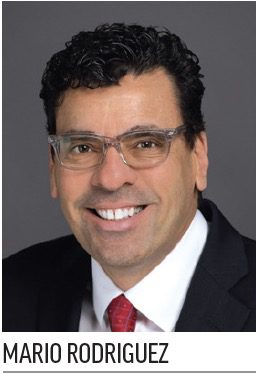
Denver International (DEN), which served more than 69 million passengers in 2019, also features a wide range of art. In fact, it established a Public Art and Exhibits Master Plan to guide its program with goals such as enhancing the passenger experience and supporting the state’s creative community.
Heather Kaufman, DEN’s director of Arts and Events, describes the resulting program as dynamic. “It creates memorable experiences and encourages visitors to return,” she says. “Artwork helps passengers feel comfortable in an otherwise busy place, allowing them to spend more time in the airport and, therefore, contributing to revenue generation.”
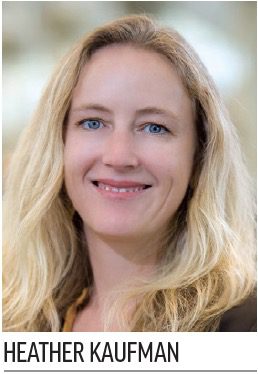 Back at SAN, the wide array of artwork includes permanent displays and collections, temporary exhibitions and performing arts. The airport prioritizes using art to enhance the customer experience, create a sense of welcome and provide a gateway to the community and culture of the region, all while maintaining “artistic excellence.”
Back at SAN, the wide array of artwork includes permanent displays and collections, temporary exhibitions and performing arts. The airport prioritizes using art to enhance the customer experience, create a sense of welcome and provide a gateway to the community and culture of the region, all while maintaining “artistic excellence.”
Overall, SAN’s art collection has been appraised at millions of dollars. However, there are no plans to sell any of the works. Arts Program Senior Manager Chris Chalupsky explains that the public art component of the airport’s program is site-specific and integrated within the built environment. It is not “plop art,” he specifies.
Public art is funded through a 2% for art policy; performing arts and temporary exhibitions are funded through SLC’s annual operating budget.
“Everything we do as the Arts Program at SAN is approached through the lens of two focus areas: customer and community,” says Chalupsky. “Neither can happen without the other. We serve our airport customers by providing them engaging arts and culture offerings from the San Diego community. And, in turn, we serve our community by providing opportunities for arts and art organizations—local small businesses—to partner with our program and have their work exposed to our sizable audience.”
Distinctive Programs
The ins and outs of curating and managing successful collections are discussed in Visual Arts Programs at Airports, a 2020 Airport Cooperative Research Program report funded by the FAA and produced by the National Academies of Sciences, Engineering and Medicine.
The report includes information about SAN, IND and 11 other airports of diverse sizes and locations: Albany International, Austin-Bergstrom International, Los Angeles International, Miami International, Nashville International, Philadelphia International, Portland International, San Antonio International, San Francisco International, Seattle-Tacoma International and Truckee Tahoe.
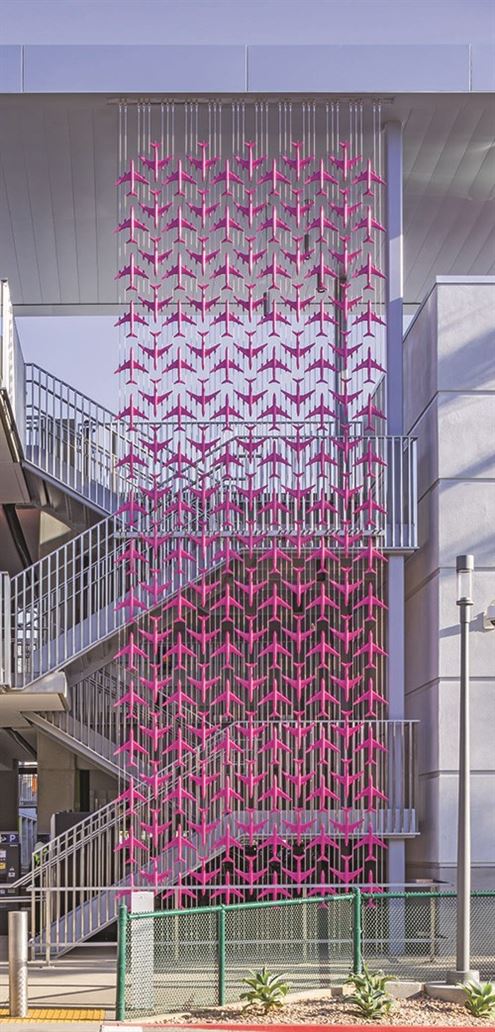
Among the report’s findings: Although the programs studied had various administrative and staffing structures, most were headed by professionals with an arts degree and experience in the field. The report also notes a shared emphasis on presenting a sense of local culture and enhancing the customer experience. Addressing the industry’s bottom-line orientation, authors found indications that airport art may increase concession spending. Providing a more pleasing/calming environment and fostering community goodwill were other benefits mentioned. (Visit www.nap.edu/read/26002/chapter/1 for more details about the report.)
Community Showcase
Highlighting homegrown talent is a common theme throughout the industry. Katie Norman, IND’s arts program and marketing specialist, notes that the Indianapolis Airport Authority supports local creatives by paying visual artists and musicians for their work. The airport’s temporary art program is funded through its operating budget; money for larger conservation and maintenance initiatives that support the permanent collection is allocated through the capital program.

Even during the COVID-19 pandemic, the airport is maintaining an active arts agenda. In March 2021, IND partnered with the Arts Council of Indianapolis to be a host site for SWISH, a three-week arts and culture event that engaged nearly 600 local artists, musicians and performers. Highlights of the event included 30 performances at the airport by local musicians and the unveiling of 10 murals by local artists being added to the airport’s temporary collection.
 Norman notes that IND officials will continue the momentum by staging more local exhibits. Plans include a gallery in Concourse A to feature works from a local non-profit artist studio.
Norman notes that IND officials will continue the momentum by staging more local exhibits. Plans include a gallery in Concourse A to feature works from a local non-profit artist studio.
Community is also a key focus of the arts program launched in 2020 at Syracuse Hancock International Airport (SYR), in Central New York. Jason Terreri, executive director of the Syracuse Regional Airport Authority, explains, “We believe that an airport should represent the community it serves…Local artwork adds depth to the travel experience. We want people to know they’ve just deplaned in Syracuse and immediately start to get a sense of the creative energy of the community.”
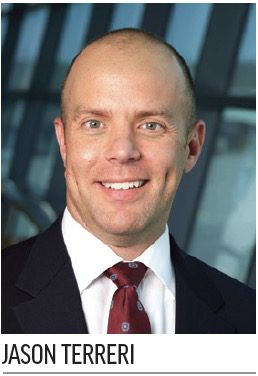 That philosophy evolved to meet the challenges that defined 2020. The Syracuse Regional Airport Authority had originally planned an art program called What Makes Central New York Great? but decided to pivot to something “more meaningful and engaging” after the pandemic hit. To inspire hands-on involvement, it distributed 300 blank canvases to local high school arts departments, organizations that help individuals with development disabilities, senior living facilities and juvenile detention centers. The completed canvases are now on display at the airport to show what the community was feeling during the pandemic.
That philosophy evolved to meet the challenges that defined 2020. The Syracuse Regional Airport Authority had originally planned an art program called What Makes Central New York Great? but decided to pivot to something “more meaningful and engaging” after the pandemic hit. To inspire hands-on involvement, it distributed 300 blank canvases to local high school arts departments, organizations that help individuals with development disabilities, senior living facilities and juvenile detention centers. The completed canvases are now on display at the airport to show what the community was feeling during the pandemic.
SYR’s new program extends beyond the visual arts. Before COVID restrictions hit, the airport began providing live music in an area just before its TSA checkpoint. Hundreds of volunteers played a $200,000 concert grand piano on loan from a local piano and organ center.
 In April 2021, the airport hosted a local poetry contest. Matthew Szwejbka, Marketing and Communications Specialist for the Syracuse Regional Airport Authority, notes that SYR timed the contest to coincide with National Poetry Month and also keyed its theme to travel and aviation topics.
In April 2021, the airport hosted a local poetry contest. Matthew Szwejbka, Marketing and Communications Specialist for the Syracuse Regional Airport Authority, notes that SYR timed the contest to coincide with National Poetry Month and also keyed its theme to travel and aviation topics.
Clearly, there are many viable approaches to providing art in airports. No matter what size or form the creative incarnations take, there are certain intangibles they have in common. As Becker at SAN puts it, “Art provides passengers, our tenants and employees a moment to pause and appreciate the journey. Emotions are hard to measure. Art means different things to different people, but as long as the art is noticed, appreciated and later remembered, we’ve succeeded in our goal of leaving a lasting impression.”

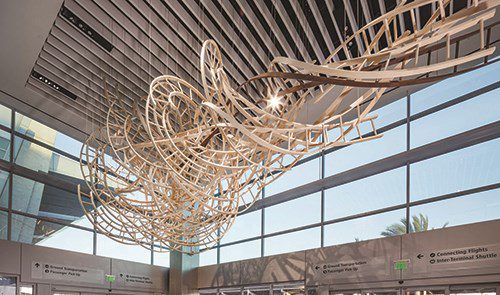
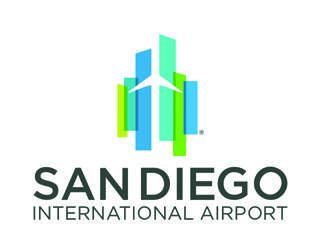 019 Traffic: 25 million passengers
019 Traffic: 25 million passengers
